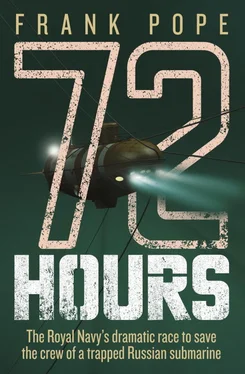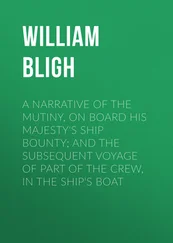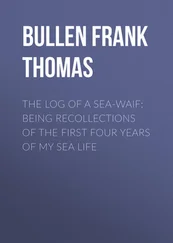The men both nodded and ushered him into the van anyway. Riches now recognised one of them; he was from the Navy Public Relations office at Her Majesty’s Naval Base Clyde. All three men sat down inside, but the engine was not started.
‘Of course, you should go over there and talk to the team, and get the latest sitrep,’ said one of the welcoming committee. ‘But we need to have a chat first. Because as soon as you’re up to date you’re going to have to face those boys,’ he continued, nodding his head towards the perimeter fence.
Riches’ stomach lurched. He’d been so keen to get to the team that he hadn’t seen the throng of vans, satellite dishes and people positioned just inside the wire. There was as much activity going on there as there was around the C17, with technicians setting up lights and tripods, satellite dishes rotating from the roofs of the network vans and photographers wielding huge lenses to get images of the loading.
‘They’re hungry for interviews as soon as possible so that they can make the six o’clock news.’
Riches cursed himself. He hadn’t even thought about the media. He should have done – he’d heard about this thing through the BBC after all. And he hadn’t considered that as the Naval officer in charge of the team he’d be the one stuck in front of the cameras. He suddenly regretted the fact that he’d turned down the media-training course that he’d once been offered.
‘We just need to have a chat about what you should say, and what you shouldn’t,’ said one of the suits.
They kept it pretty clear. The mission was a humanitarian one to help fellow submariners, and the Royal Navy would do everything in its power to ensure a successful outcome. The fact that they were Russians was irrelevant.
‘Don’t say anything about politics or be drawn into speculating on how it might have happened. And don’t whatever you do talk about the competence or incompetence of the Russian Navy,’ he continued.
Standing in front of the television cameras 20 minutes later Riches tried to project all the confidence he could, but was all too aware how much of it was bluff.
‘We understand that the sailors have only one day’s worth of air left. Do you think you can get to them in time?’ asked the first anchor.
‘We all hope that by the time we get to the scene the Russian sailors will have been rescued. But we are deploying so that the ROV can be in place as a contingency if required by the Russians,’ Riches replied, picking his words carefully as the wind buffeted around him, whipping his tie around as though it were an indicator on a wildly fluctuating gauge.
After a couple of rounds with different stations he began to get the hang of it. They asked the same sort of questions, and he was starting to know what they wanted to hear in reply. He walked away all puffed up, convinced that his earlier nerves were simple stage fright.
By the time Riches had finished playing the media monkey, the real work was almost done. Meanwhile, a C130 Hercules had thundered into land, carrying an RAF translator, the backup flight crew for the C17 and the aircraft security team. To get everybody on board, the submarine rescue squad had been trimmed. There were only eight from Rumic, including a naval architect to help assess and rig the equipment on the Russian mothership. A Naval architect was not a usual part of the team, but Gold had requested him, warning that they had no idea what vessel they were going to be given to work from.
The loading was close to completion, but the team were still awaiting their final flight clearance. Squadron Leader Keith Hewitt came and introduced himself to Riches, bringing the news that he’d received a fax detailing their permission, and grinned that they’d been granted humanitarian status. Normally clearance could take days or even weeks to arrange, but now they had the right to overfly any countries they wished without the bureaucratic headache of getting diplomatic permission.
As the hatch sealed the fuselage of the C17 from the darkening tail-end of the day in Scotland, the first glimmers of sun were appearing on the horizon over the sea east of Kamchatka.
Friday, 5 August/Saturday, 6 August
SS + 37 h 30 mins
18.00 UK – 21.00 Moscow – 06.00 Kamchatka
Headquarters of 70076 military unit, Petropavlovsk-Kamchatsky
The sun was already high in the northern sky when, at six in the morning, the headquarters of 70076 military unit – to which the Georgy Kozmin and its Priz submersibles belonged – found itself under siege from a platoon of local journalists. An ordinary building on the bay shore, it was not designed for such an assault. Its only defence was the hill on which it was sited – there was not even a fence, just a fringe of overgrown weeds sprouting at the base of the walls.
Guzel Latypova was there, waiting in the cold. She knew it was going to be tough to get anything out of the authorities on this. Yesterday she’d been met with nothing but walls. When she’d first arrived this morning, the Officer of the Watch had summoned help to try to chase them away. They were highly agitated at the presence of journalists, and didn’t hide it. But, eventually, a man stepped out of the door, in a uniform but without epaulettes on his shoulders that might indicate his rank and so help deduce his identity. He didn’t say his name, but confirmed that there was indeed an emergency event. Then, without giving any more details, he disappeared back inside, shutting the door on the pack of newshounds. Far from quenching their curiosity, the mysterious official’s admission had only added fuel to the fire.
Later, Oleg Kashin, a reporter for Moscow’s Kommersant newspaper, managed to engage the guard in conversation. The guard confided that the usual commander of AS-28 – Vladimir Cheremukin – had gone away on vacation a few days before the incident.
‘He did the right thing,’ the guard told Kashin. ‘He is such a big guy that if he’d stayed he would have taken the oxygen of seven men.’
The press pack was baying for blood by the time the military spokesman, Deputy Chief Petrov, finally emerged from the military headquarters to address them. He soothed them by admitting that there had been an incident, and that their efforts to assist had taken all their attention so far. However, now that things were going better, he could spare the time to share some information with them. The rescuers had succeeded in raising the temperature of the submersible from five to ten degrees, he said. It was a partial truth, after all. By moving crewmen back from the frigid forward compartment into the warmer second compartment, the temperature around them did indeed rise by four degrees. But that four degrees was generated by the warmth of the men inside, not by any actions from the surface.
Petrov also announced that the rescuers had managed to shift the stricken Priz submersible 30 metres from the accident site using grappling hooks dragged from vessels searching the area. There was no way that the journalists could know that the hooks had yet to snag the submersible at all, let alone drag it anywhere. Russian rescue planes were on their way, he added, although they would never arrive. But what everyone really wanted to hear was how long the sailors could survive on the air supplies that they had on the seabed. Here Petrov continued the long and distressing sequence of mis-information that would keep the families on tenterhooks for the next three days, as estimates of remaining air in official press releases swung between two and 48 hours.
Because of the building media frenzy, Vladimir Kuroyedov, head of the Russian Federation Navy, was on high alert. He’d recently suffered a string of embarrassing incidents. In January 2004, he’d invited President Putin on to a Typhoon-class nuclear submarine to witness two ballistic missile launches from Delta IV-class subs. Television news crews had been on board, cameras rolling, to record the great event. But the launch time came and went with no action, and for 20 minutes they waited, Putin seething. Both launches had failed entirely.
Читать дальше












